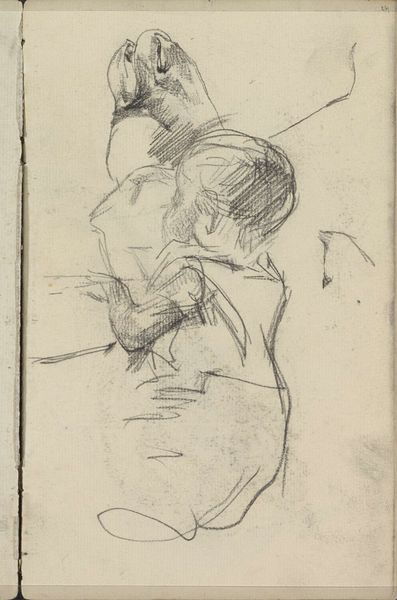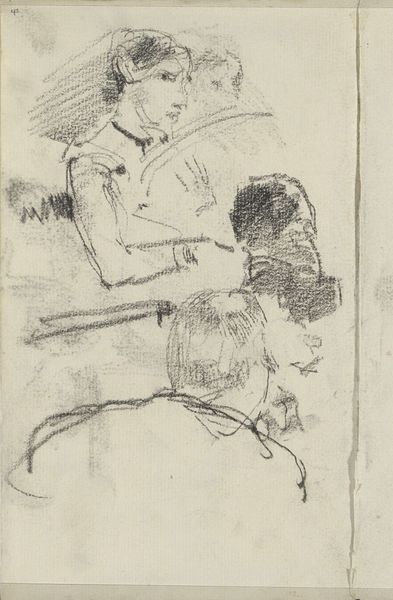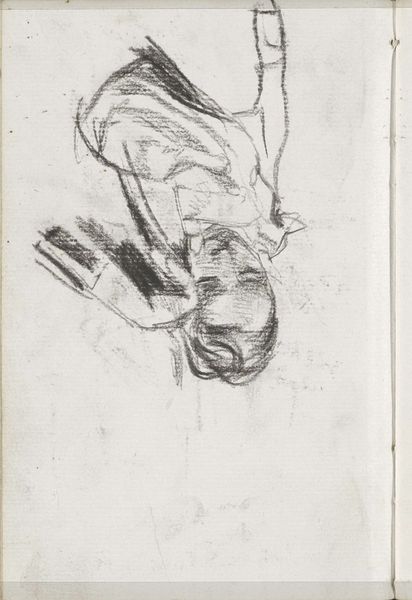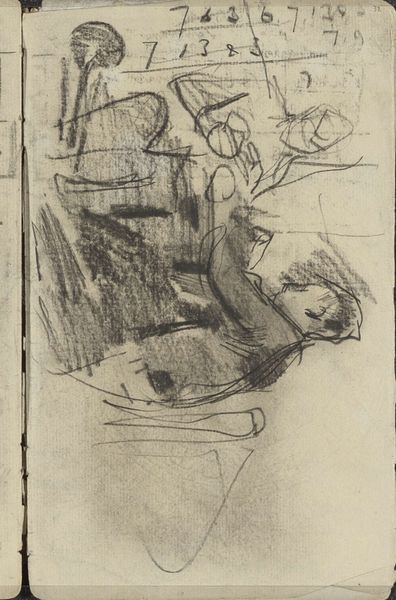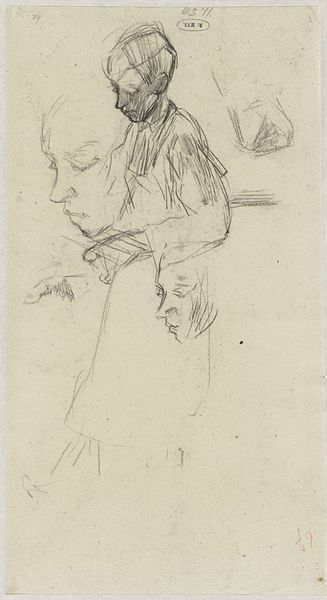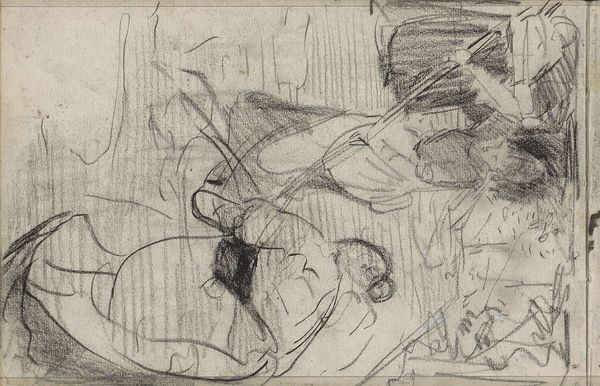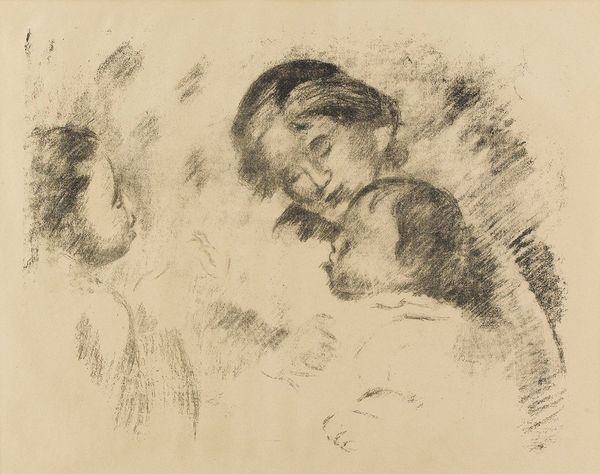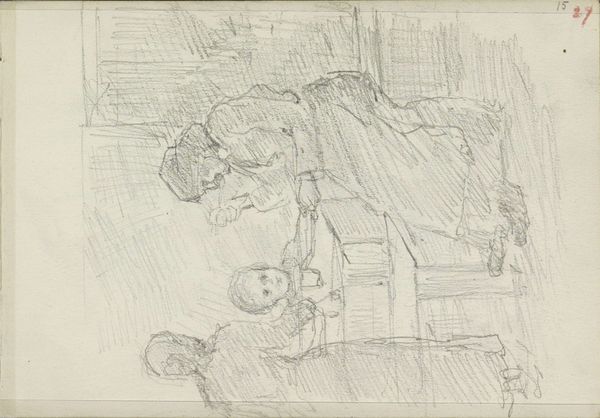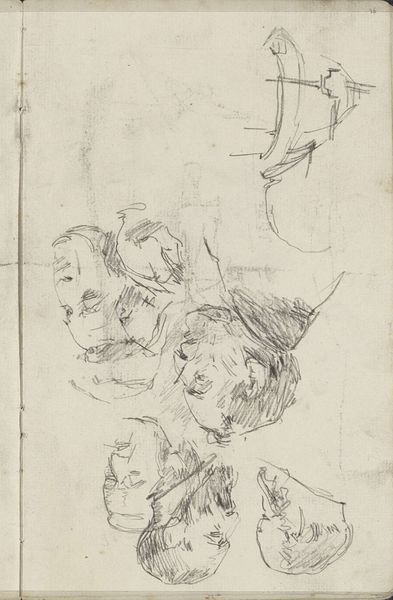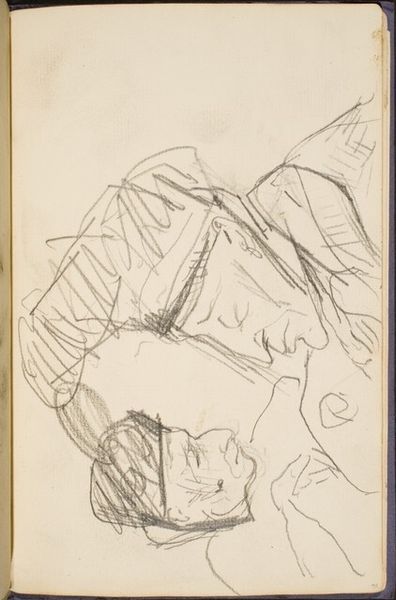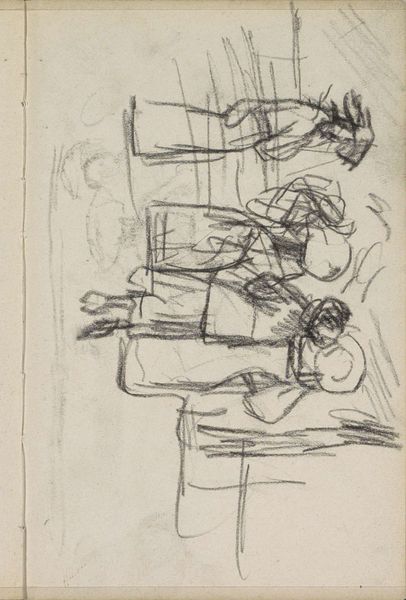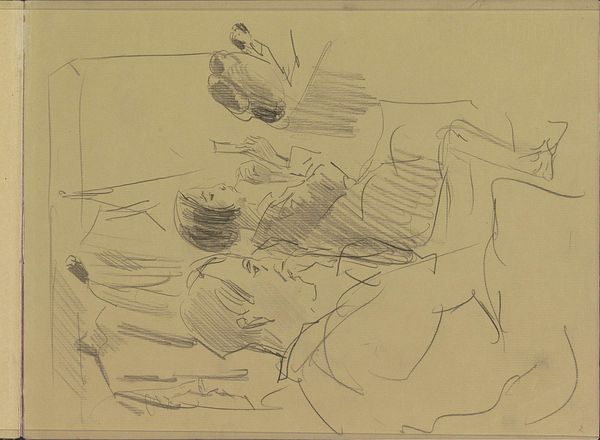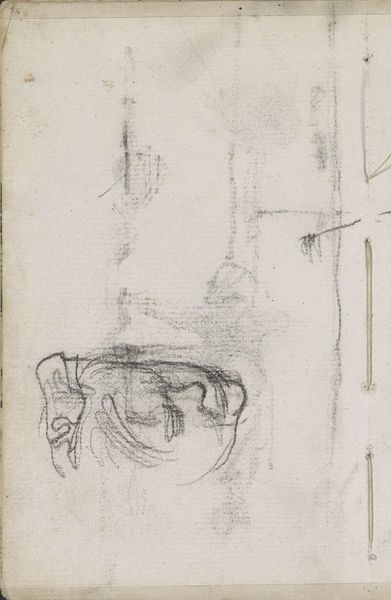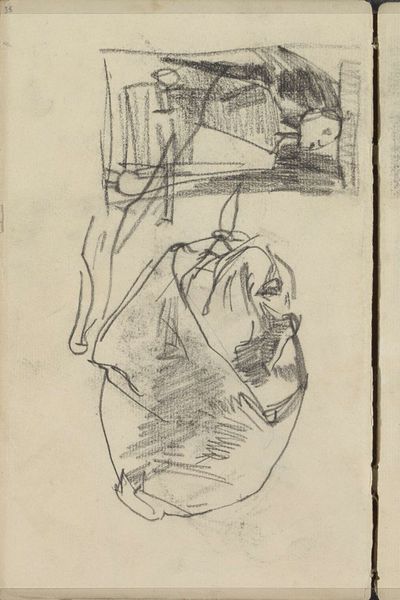
Copyright: Rijks Museum: Open Domain
Curator: What an enigmatic sketch! This pencil drawing by George Hendrik Breitner, created around 1893, is titled "Vier waspitten," and resides here with us at the Rijksmuseum. Editor: My first impression is melancholy, a sense of transience. The sketch lines are so immediate, it feels like capturing a fleeting moment of vulnerability. Curator: Breitner was indeed known for capturing the immediacy of urban life and portraiture. His subjects often embodied a certain world-weariness, particularly his depictions of working-class women. Are we seeing four distinct sitters here? Or multiple renderings of one model? Editor: To me, the layering of faces and torsos gives it this haunting quality of a half-formed memory. The sketch feels intimate but also incomplete, a visual fragment of a lived experience, perhaps hinting at themes of identity or even hardship, viewed through the rapid notation and almost hidden gesture. Curator: Perhaps Breitner sought to capture their essential humanity. These figures are not idealized; they bear the marks of life. The artist would move in and out of certain portrait subjects. Editor: Exactly, they feel relatable. The rapid strokes suggest urgency, like he was racing against time to record what he saw. I'm thinking that there is meaning within the symbol of seeing or concealing: Note the averted glances and shadowed eyes and foreheads. How much is being hidden from view here? Curator: Interesting interpretation. He seemed committed to capturing authentic emotions and glimpses into daily life through impressionistic gestures. How it differs from staged salon portraits...The society of the period valued particular kinds of image-making over others... This intimate work lets us see something of life’s informal textures, capturing moments not typically rendered on this scale. Editor: Seeing the drawing with these historical associations adds new depths. Thank you. It truly enriches the viewing experience, making it a dialogue with the past. Curator: Indeed. And the ways our own symbol-saturated minds decode or project meaning continues the artwork’s ongoing dialogue into the present.
Comments
No comments
Be the first to comment and join the conversation on the ultimate creative platform.
